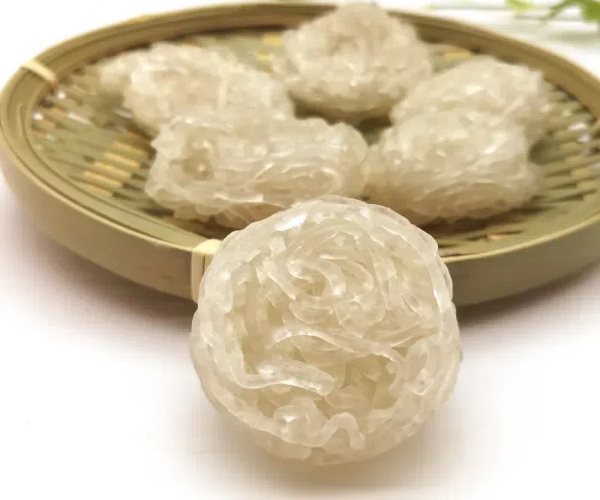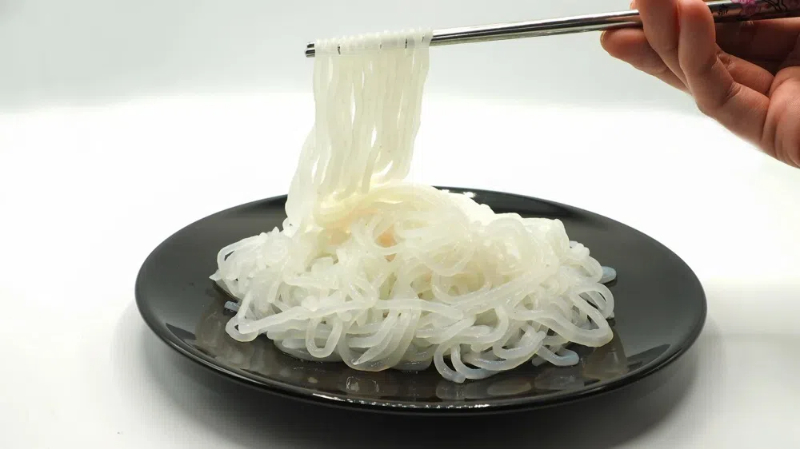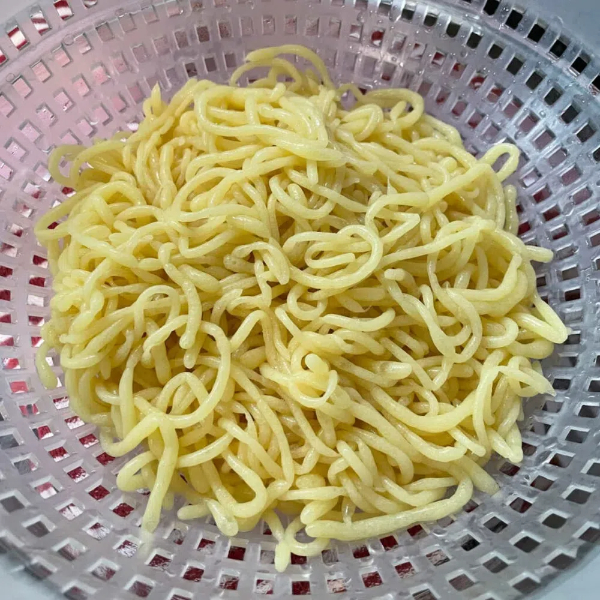
Content Menu
● Introduction to Food Dehydrators
>> Types of Food Dehydrators
● Making Dry Konjac Noodles with a Food Dehydrator
>> Step-by-Step Guide
>> Benefits of Drying Konjac Noodles
● Industrial Applications of Food Dehydrators
>> Types of Industrial Dehydrators
>> Advantages in Industrial Settings
● Tips for Choosing the Right Food Dehydrator
● Conclusion
● Frequently Asked Questions
>> 1. What is the ideal temperature for drying konjac noodles?
>> 2. How long does it take to dry konjac noodles?
>> 3. Can I use a food dehydrator to dry other types of noodles?
>> 4. How do I store dried konjac noodles?
>> 5. Are food dehydrators energy-efficient?
● Citations:
Konjac noodles, also known as shirataki noodles, are a popular low-carb and low-calorie alternative to traditional noodles. They are made from the root of the konjac plant and are often used in Asian cuisine. One of the most effective ways to preserve and enhance the shelf life of konjac noodles is by drying them using a food dehydrator. In this article, we will explore the process of making dry konjac noodles with a food dehydrator and delve into the world of food dehydration technology.

Introduction to Food Dehydrators
Food dehydrators are appliances designed to remove moisture from food, thereby preserving it and extending its shelf life. They are widely used for drying fruits, vegetables, meats, and even noodles like konjac. The dehydration process involves circulating hot air around the food to evaporate its moisture content, resulting in a dry, lightweight product that can be stored for long periods.
Types of Food Dehydrators
1. Batch Type Dehydrators: These are commonly used for fruits and vegetables and come in various sizes, including industrial models that can handle large quantities of food.
2. Conveyor Belt Dehydrators: These are continuous drying machines ideal for large-scale food production, such as drying noodles, pasta, and seafood.
3. Square or Rectangular Dehydrators: These models offer efficient horizontal airflow, ensuring even drying without the need for tray rotation.
4. Circular or Round Dehydrators: These are more common in household use and require tray rotation for even drying.
Making Dry Konjac Noodles with a Food Dehydrator
Step-by-Step Guide
1. Preparation: Start by boiling the konjac noodles according to the package instructions until they are slightly softened. Drain and rinse them with cold water to stop the cooking process.
2. Pat Dry: Use a clean towel or paper towels to gently pat the noodles dry. This step helps reduce excess moisture, which can affect the drying time.
3. Dehydrator Setup: Place the noodles in a single layer on the dehydrator trays. Ensure they do not overlap to allow for even drying.
4. Temperature and Time: Set the dehydrator to a temperature of around 135°F to 145°F (57°C to 63°C). The drying time will depend on the thickness of the noodles and the desired level of dryness. Typically, it takes between 6 to 12 hours.
5. Monitoring: Check the noodles periodically to ensure they are drying evenly. If necessary, rotate the trays for consistent drying.
Benefits of Drying Konjac Noodles
- Longer Shelf Life: Dried konjac noodles can be stored for months without refrigeration, making them ideal for backpacking or emergency food supplies.
- Convenience: They are lightweight and easy to rehydrate when needed.
- Nutritional Preservation: The dehydration process helps preserve the nutrients in the noodles.

Industrial Applications of Food Dehydrators
In addition to household use, food dehydrators play a crucial role in industrial food processing. Large-scale dehydrators are used in factories to dry a variety of foods, including noodles, fruits, and vegetables. These machines are designed to handle high volumes efficiently and are essential for maintaining food quality and safety standards.
Types of Industrial Dehydrators
1. Batch Type Industrial Dehydrators: These machines are used for large quantities of food and can be automated for efficiency.
2. Conveyor Mesh Belt Dehydrators: Ideal for continuous drying processes, these machines are customizable to meet specific production needs.
Advantages in Industrial Settings
- Efficiency: Industrial dehydrators can process large quantities of food quickly, making them ideal for mass production.
- Consistency: They ensure consistent drying results, which is crucial for maintaining product quality.
- Cost-Effective: By reducing moisture content, these machines help reduce storage and transportation costs.
Tips for Choosing the Right Food Dehydrator
When selecting a food dehydrator, whether for home use or industrial purposes, consider the following factors:
- Capacity: Ensure the dehydrator can handle the volume of food you plan to dry.
- Temperature Control: Look for models with precise temperature control to ensure optimal drying conditions.
- Energy Efficiency: Choose dehydrators with energy-saving features to reduce operational costs.
Conclusion
Making dry konjac noodles with a food dehydrator is a straightforward process that offers numerous benefits, including extended shelf life and convenience. Whether you are a home cook or an industrial producer, food dehydrators are versatile tools that can enhance the preservation and quality of various food products.

Frequently Asked Questions
1. What is the ideal temperature for drying konjac noodles?
The ideal temperature for drying konjac noodles is between 135°F to 145°F (57°C to 63°C). This temperature range helps preserve the noodles' texture and nutritional content.
2. How long does it take to dry konjac noodles?
The drying time for konjac noodles typically ranges from 6 to 12 hours, depending on their thickness and the desired level of dryness.
3. Can I use a food dehydrator to dry other types of noodles?
Yes, you can use a food dehydrator to dry other types of noodles, such as rice noodles or buckwheat noodles. However, the drying time and temperature may vary based on the noodle type.
4. How do I store dried konjac noodles?
Dried konjac noodles should be stored in airtight containers to maintain their freshness. They can be kept at room temperature for several months.
5. Are food dehydrators energy-efficient?
Many modern food dehydrators are designed to be energy-efficient, with features like automatic shut-off and optimized airflow systems that reduce energy consumption.
Citations:
[1] https://airtekdehydrator.com/blog/types-commercial-food-dehydrators/
[2] https://huggingface.co/IDEA-CCNL/Randeng-Pegasus-523M-Chinese/raw/main/vocab.txt
[3] https://www.thespruceeats.com/best-food-dehydrators-4077285
[4] https://blog.csdn.net/yaday/article/details/7535618
[5] http://www.foodpreserving.org/2014/11/types-of-dehydrators.html
[6] https://www.lyhero.com/upload/file/202212/29_095051_5749.xlsx
[7] https://www.familyhandyman.com/list/10-unusual-ways-to-use-your-food-dehydrator/
[8] https://www.cs.cmu.edu/afs/cs.cmu.edu/project/cmt-40/Nice/Transfer/Chinese/xferlexicon











